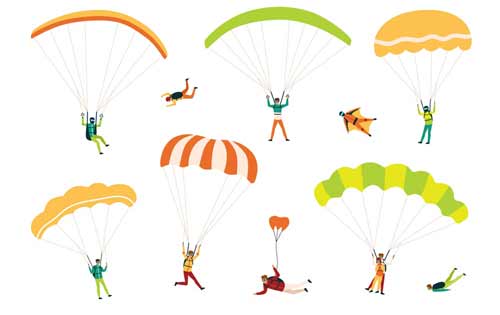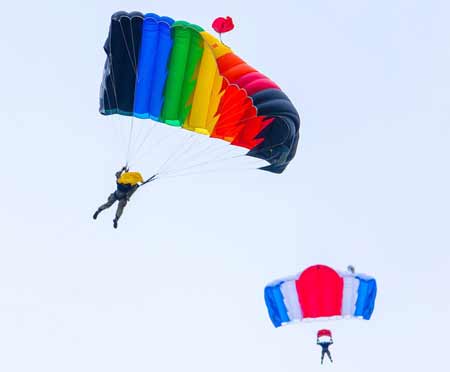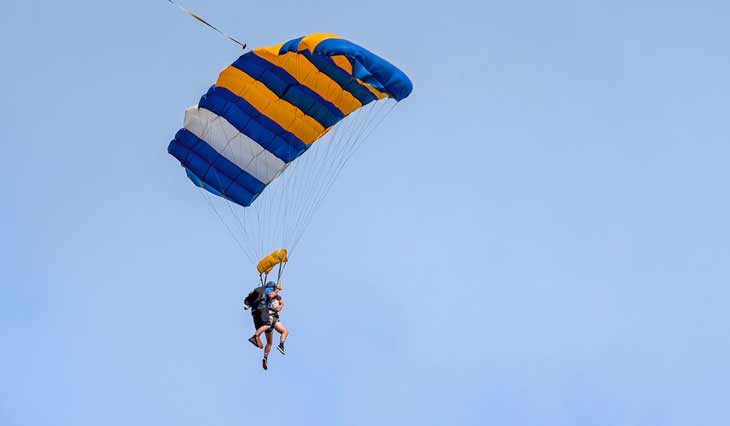The parachute is most commonly made of a fabric material with a frame or hoop. One end of the fabric is attached to the person or landing object and the other end is pulled tight by some kind of force. The parachute slows down because it uses air to create drag as it falls, while the user moves away from the ground. This creates more time for lessening impact on an object or person who's falling from a higher altitude.
Types Of Parachutes

Parachutes come in many sizes and shapes however most parachute designs feature a rectangular parachute canopy with four suspension lines attached to the parachute harness and parachute risers. The parachute harness is attached to the parachute risers and when deployed, raises the parachute canopy into a conical shape above the parachute harness wearer.
Different types of parachutes include parafoils, ram air, and ripcords. Parafoils are also called flight like with the addition of geometry of camber that allows for forward motion. This type is designed to generate more lift than drag in the area of its canopy so it will be able to glide or fly. A ram air parachute fabric includes air pockets that have been integrated into its design in order to provide increased lift. A ripcord parachute is a device that requires the person using it to manually release its chute with a cord immediately after landing.
The parachute is usually worn on a person's back and has a hooped frame that holds the parachute fabric. It can have control lines that are attached to its hoop and can also have risers that run from the parachute fabric up to a harness that is secured with straps around a person's waist and legs. The parachute can be folded into a pack for ease of carrying, with the parachute fabric attaching to the pack with buckles. Read from the link to learn more information on about different types of parachute.
During The Parachuting

During parachute jumping, it is common for the parachute to be deployed during a free fall. The parachute is designed to use air currents as they build in the local atmosphere and then slows down. As the parachute gets closer to ground level, it becomes more of an air brake than a parachute. The parachute is deployed using a parachute canopy release mechanism attached to the parachute harness. This mechanism can be hand activated or automatic depending on the parachute design.
It is very important to keep a parachute in good working order because it can be used to save your life, and of other people with you. Here are some ways to do this:
- Inspect parachute monthly for damage or deterioration.
- Regularly inspect parachute cords for wear, cuts, and knots that could affect parachute performance.
- Add seam sealant annually to help prevent fabric from ripping open during parachute descent.
- Replace parachute cords every 2 years.
- Inspect parachute and parachute Packing regularly for damage or deterioration.
- Learn all of parachute equipment and how to use it before you need it.
- Follow manufacturer's instructions for packing parachute into container.
Conclusion
If you're wondering how to safely get down from a great height, the answer is with a parachute. A well made and properly functioning parachute will allow for an even, safe descent to the ground below. It's important that your parachutes are regularly inspected because if they have any tears or holes in them it can be dangerous when you use them.
